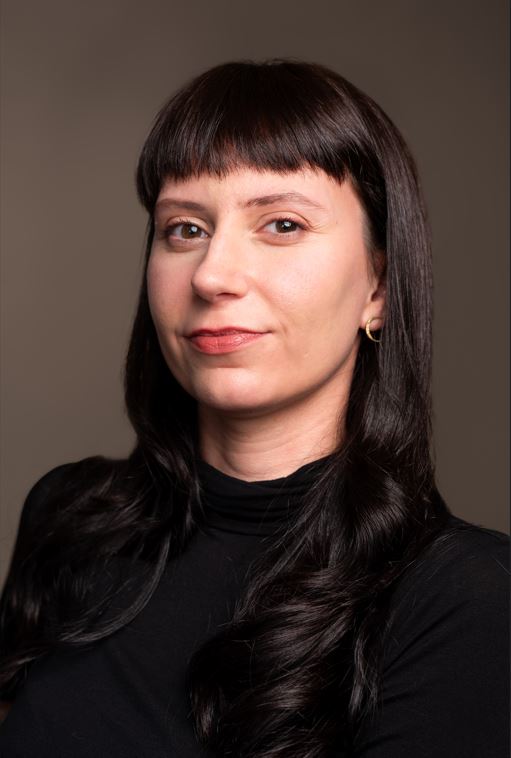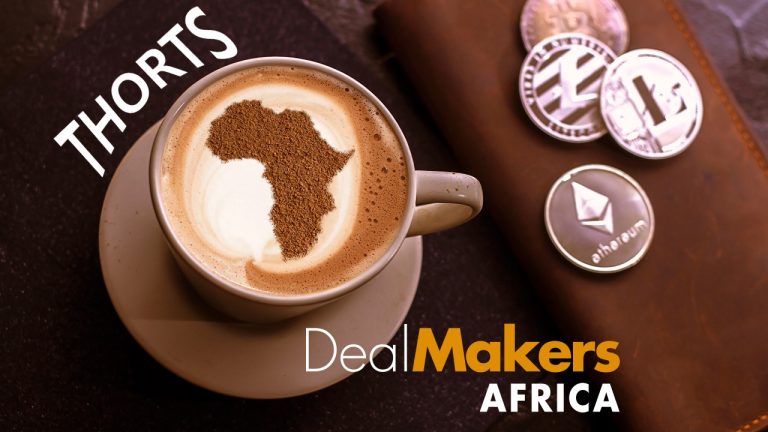Accelerate Property Fund flags positive distributable earnings (JSE: APF)
There’s been some strong recent momentum in the share price
In the past 30 days, Accelerate Property Fund is up 40%. That’s rather lovely from my perspective, as I went long recently based on what struck me as a turnaround story being ignored by the market. The release of the circular for the disposal of Portside was what gave me the comfort to go long. There had been a weird delay in the release of the circular that spooked the market, but eventually it came out. Dealing with the debt is absolutely key to this story and the sale of Portside will certainly help with that.
I also went and checked out Fourways Mall on my recent trip to Joburg, the “white elephant” mall that the fund is trying to turn into something that works. They will have their work cut out for them, but the macro story is a tailwind rather than a headwind at the moment.
To add to the positivity, a trading statement for the six months to September notes that the fund will swing from a distributable loss to distributable earnings of between R56 million and R58 million. Although there’s still no dividend (as one would expect), at least the fund is no longer going backwards!
Deneb’s earnings more than doubled (JSE: DNB)
Revenue growth has been seen across the group
Here’s a positive story around South African business conditions: Deneb grew revenue by 22.4%. Although some of this growth was in the lower margin segments (and hence gross profit was only up by 14.2%), that’s still a great outcome. Operating costs increased just 2.7% on a like-for-like basis and 8% overall.
Numbers like these can only mean one thing: a great performance in operating profit, up 37.2%. Once you include the interest cost savings of a lower average debt balance and less onerous interest rates, you get to HEPS growth of 101%. Yes, HEPS more than doubled!
The Branded Product segment was where you’ll find the excitement, with revenue up 81%. This is also where you’ll find the substantial mix effect on gross margin, as IT products (hardware and software) were the biggest source of growth. Gross profit was up 19.6% and operating profit rose by a rather ridiculous 368% in this segment to R34 million.
In the Manufacturing segment, they managed to improve operating profit by 27.5% despite a 1% drop in revenue. That’s just as well, as this is the most important segment with operating profit of R99 million.
Deneb is also in the process of reducing its property exposure. If they can reallocate capital into areas that are capable of producing this kind of growth, then that will be the right decision for shareholders.
Despite pressure on revenue, eMedia grew earnings (JSE: EMH)
Advertising revenue is in decline
Traditional TV businesses aren’t easy to manage. Although eMedia tends to outperform the market for advertising revenue, they are still swimming upstream in that market. This is why revenue is down 3.2% for the six months to September.
Thankfully for investors, they’ve done a great job of reducing expenses. Although there are some once-offs in these savings, they still deserve credit for operating profit growth of 5.2% and HEPS growth of 20.9%. As a cautionary tale though, the dividend is flat at 14 cents per share.
In an effort to diversify beyond this reliance on advertising revenue, eMedia is executing transactions like the acquisition of a stake in Pristine World. They want to collaborate on international projects and earn more revenue from the content production industry. It sounds good in theory, although I remain concerned about the valuation behind that deal.
eMedia is a value investor favourite as the stock trades on a very low multiple. This reflects concerns around the trajectory of the underlying industry, as cost reductions can’t make up for revenue pressure every year. The share price closed 7% higher on the day of these numbers, but it remains over 30% down year-to-date.
Frontier Transport: earnings down, dividend up (JSE: FTH)
Golden Arrow Bus Services has been having a tough time
Frontier Transport is one of those JSE-listed companies that generally releases solid results, even though the underlying operations aren’t exactly what you would describe as a sexy business. But in the six months to September, the growth story ran out of road.
Revenue has dropped by 5.7% as Golden Arrow contended with substantial competition in passenger volumes from Metrorail lines and new taxi licences. There’s also a great line in the results about how bus passengers bear the brunt of roadworks and traffic, while taxis use “questionable driving behaviour” to get passengers through the traffic faster! Although there are other segments in the group, a bad time for Golden Arrow is almost certainly a bad time for shareholders as well.
Concerningly, the group’s operating expenses increased by 6% despite the drop in revenue. There doesn’t seem to be much flexibility to constrain expense growth during a period of weak revenue.
Once you add on the higher debt levels from the investment in electric buses, HEPS fell by a nasty 13.7%.
The only silver lining here is a 6.9% increase in cash dividends. I would view this cautiously though, as that dividend trajectory clearly isn’t sustainable if earnings continue to suffer.
The portfolio tilt continues at Growthpoint (JSE: GRT)
Of course, the V&A Waterfront remains the jewel in the crown
Growthpoint released an update covering the three months to September 2025. It includes a number of interesting strategic and operational elements.
The company previously set a target to offload assets of R3.5 billion in the year ending June 2026, with the main goal being to reduce exposure to B-grade offices and other non-core properties in the retail and industrial sectors. They are looking at getting out of deteriorating CBDs as well. In other words, the Growthpoint strategy can be described as a flight to quality, supported by the capital deployment strategy that will focus on the Western Cape and development pipeline opportunities at the V&A Waterfront in the next three to five years.
In this quarter, sales worth R391.6 million were achieved at a very slight discount to book value. They expect to get to R3.6 billion in disposals for the year, ahead of the original target.
In the South African portfolio, vacancies came down from 8.2% to 7.4% – the lowest level since June 2019! That’s a positive story for the economy as a whole. In the retail portfolio, footfall was up 3% and trading density increased by 5% on a last-twelve-months basis (at least, I think they are talking about a twelve-month period – the disclosure isn’t 100% clear).
The office sector vacancies are steady at 14.6%, although the regional trends are incredible: the Western Cape vacancies are just 3.3%, while Gauteng sits on an ugly 19.2% and KZN is on just 1.3%.
In the logistics and industrial sector, the vacancy rate has improved from 4.1% to 2.5%, the lowest level in over a decade. The regional picture is much more consistent here, showing how Gauteng is still an economic workhorse despite having such a severe supply-demand imbalance in office property.
The announcement goes into tons of detail around capital deployment opportunities, including the strategic partnership with Cape Winelands Airport to co-develop and manage a mixed-use aviation precinct in the Western Cape. Again, this speaks directly to the current capital allocation strategy.
As for the all-important V&A Waterfront, EBIT grew by 5% – a subdued performance due to the decommissioning and redevelopment of The Table Bay Hotel. Like-for-like EBIT growth was 16% though, with tourism as a major boost to the property.
Naturally, Growthpoint benefits from lower interest rates, with the weighted average cost of funding improving by 30 basis points to 8.6%. A decrease in rates helps the entire REIT sector.
Much as there are exciting moves in the underlying portfolio, Growthpoint still has exposure to many difficult assets in South Africa. This is why distributable income per share is expected to grow by between 3% and 5% for FY26. Hopefully this will improve over time as the shape of the portfolio changes.
Coal mining: the unexpected hero at Hosken Consolidated Investments (JSE: HCI)
Much smaller losses in oil and gas had an even bigger impact
HCI is the mothership for a number of business interests that include a few of the other companies referenced in Ghost Bites today (Deneb / eMedia / Frontier Transport / Tsogo Sun). I therefore won’t go into any further details on these areas as they are covered elsewhere. HCI also has extensive other business interests, like coal mining and oil and gas, so I’ll focus there in this section.
Before we get into the details, we can deal with the most important news: HEPS has jumped by a juicy 74% for the six months to September. The dividend is up 20%, so not all of this is coming through in cash, but it’s still a great story for investors. The net asset value per share is up by 4%.
Looking at the segments, there’s no “bad” news in this period like we saw in the last period. Almost every segment has improved year-on-year, in some cases by a huge margin. Some of these are non-cash items related to revaluations, like the oil and gas prospecting business which recorded a headline loss of R22.2 million vs. a huge loss of R264 million in the comparable period. Another important move is in the coal business, which speaks directly to cash earnings. Thanks to better sales volumes and operational gains from quality improvements, headline earnings increased by 173% in coal to R103 million.
My concern around HCI hasn’t changed though: over half of group headline earnings is derived from the gaming industry. As you’ll see lower down in Tsogo Sun, that’s a tough space.
KAL Group’s revenue hurt by fuel deflation, but profits look good (JSE: KAL)
Agrimark did the heavy lifting in this period
KAL Group released results for the year ended September. Although revenue was down 6.6%, the vast majority of this decline was thanks to fuel price deflation. That’s great news for consumers and not such good news for owners of forecourts.
Thanks to a significant improvement in group gross margin, gross profit was up 3.9% and EBITDA increased 7.5%. HEPS was up 10.6% and the dividend increased by 16.7%, a remarkable outcome in the context of that revenue drop.
Looking deeper, the Agrimark business grew revenue by 6.4% and enjoyed a 70 basis points increase in gross profit margin to 11.4%. Although operating expenses grew by 7.5% (and thus ahead of revenue), the gross profit margin gains were enough to take profit before tax growth to 12.8%.
The other interesting segment worth looking at is PEG, where the impact of fuel deflation was felt the most, with fuel revenue dropping by around 15%. The retail business grew revenue by 1.4%, so the savings at the pumps didn’t really translate into more spend at the forecourt shops. Still, the relatively lower contribution of fuel means that gross profit margin was up from 13.4% to 15.2%, mitigating some of the pain. Attributable recurring headline earnings fell by nearly 7%.
KAL’s share price has been volatile this year, currently down around 8% for the year.
If you look through the complicated numbers, Life Healthcare is growing (JSE: LHC)
Sometimes, normalised earnings really are necessary
Life Healthcare recently sold Life Molecular Imaging (LMI), locking in a post-tax profit that wouldn’t be included in continuing operations. But due to an agterskot-type payment due to the previous owners of LMI based on the selling price achieved, a liability gets recognised and then adjusted through continuing operations. This creates an accounting distortion that makes the numbers harder to work with.
Revenue is thankfully unaffected, so revenue growth from continuing operations of 6.0% (boosted by paid patient days increased by 1.1%) is a helpful number. Normalised earnings per share increased by 10.1%, so there’s some margin expansion there. And perhaps most importantly, the final cash dividend is up 12.9%, so that gives some credence to the double-digit growth story.
Other than the amount owed to the previous owners of LMI, the group has almost no debt on the balance sheet. This puts them in a strong position going forwards, with various capex projects on the table to expand the group.
Nampak’s earnings more than tripled (JSE: NPK)
This is yet another great turnaround story on the local market
Nampak has released a trading statement dealing with the year ended September 2025. Brace yourself: the numbers are rather spectacular.
At the halfway mark this year, Nampak’s HEPS from continuing operations was up by 5%. But for the full year, this metric has more than tripled! Interestingly, it’s not that the second half of FY25 has been insanely good. If you look at the numbers, Nampak’s interim HEPS was R56.84 and the expected full year number is between R101.00 and R107.00. This means that the second half this year was actually softer than the first half, with wild distortions in the base period driving this much higher year-on-year growth for the full year vs. the interim period.
HEPS from total operations is an even more volatile story, coming in at between R119.50 and R122.00 this year vs. just R13.78 in FY24.
There are clearly some significant distortions in the year-on-year comparison, so the better thing to focus on here would be the guided earnings range rather than the percentage move. If we use continuing operations (the correct thing to do), then the Price/Earnings multiple is around 5.3x. The stock is trading at close to the 52-week high and it might push higher based on these numbers.
Novus dragged down by the Education segment (JSE: NVS)
Doing business with the government isn’t fun
Novus released results for the six months to September. Revenue was up by just 1% and operating profit almost halved to R102.5 million. HEPS was down 55%, so profitability really took a dive in this period. As per last year, there’s no interim dividend for shareholders.
The problems sit in the Education segment, where revenue fell by 64.9% thanks to delays in the Department of Basic Education (DBE) finalising the foundation phase catalogue. So far, the Maskew Miller Learning acquisition isn’t working out well, but perhaps lumpy revenue is coming down the line when the DBE finally gets its act together.
The Print segment managed growth of 0.5%, which barely touches sides in terms of offsetting problems elsewhere. The group structure includes the Print, Publishing and Distribution segment for the first time, which is why they specifically carved out the revenue in Print to give a sense of the legacy performance. This is an industry in flux, as evidenced by newspaper tonnage collapsing by 44.5%!
Just to add insult to injury, the Packaging segment experienced a drop in revenue of 6.2%.
The group has R741.7 million on the balance sheet, of which R309.4 million is ring-fenced for the mandatory offer to Mustek (JSE: MST) shareholders that has been such a tenuous process with the regulator. The TRP investigation is ongoing.
Sirius Real Estate locks in another acquisition in Germany (JSE: SRE)
This is the fund’s fifth business park in Hamburg
The capital deployment journey continues at Sirius Real Estate, with the latest deal being the acquisition of a multi-tenant business park in Hamburg, Germany for €31.9 million. The fund notes that they have other properties in the region, so there are some operational synergies from having properties fairly close together (although the closest one is a 30-minute drive).
The EPRA Net Initial Yield for the deal is 6.1%. As you would expect from a Sirius acquisition, there’s upside from actively managing the property. The current occupancy rate is 89%, so they have the opportunity to fill the remaining space. There are also smaller tenants on shorter-dated leases (as usual), so that’s another opportunity for rental uplift. As for the anchors, there are two tenants contributing over 20% of the rent roll and the tenants are from a wide variety of sectors.
This takes the acquisition tally to over €340 million in calendar year 2025!
Looking ahead to 2026, Sirius expects the focus to be on deals in Germany rather than in the UK.
The slow burn continues at Tsogo Sun (JSE: TSG)
The casino business is a struggle
The rise of online betting / gambling has been a major discussion point this year. The biggest loser in this regard is the casinos, with spend on gambling being redirected from poker tables and slot machines to smartphone screens. These are large assets with extensive fixed costs, so pressure on volumes and footfall is really tough to manage.
For the six months to September 2025, Tsogo Sun’s income fell by 1%. Operating costs were kept flat, so adjusted EBITDA decreased by “only” 3% and adjusted EBITDA margin contracted by 80 basis points. Thanks to a decrease in net finance costs, HEPS actually increased by 1%. Talk about a sideways story!
As part of ongoing efforts to prioritise debt repayments and share buybacks, the interim dividend fell by 50%. They have little choice I think, as net debt has to come down when the demand environment is so weak. This is why the fund’s remaining 3.2% stake in City Lodge (JSE: CLH) is expected to be sold within a year or so, as those proceeds will go towards debt reduction. They are also selling off non-core assets where possible, like casinos in outlying areas.
Looking at the segmental performance, the fact that they start with the Online Betting division in the report really speaks volumes. Tsogo Sun has been struggling in this space, but things do seem to have improved considerably and they are now profitable in this space. Brace yourself though: they’ve sent a warning that profits may come under pressure due to the marketing and technology investment required to compete in this market.
In Casino and Hotel Precincts, revenue was down 0.8% and adjusted EBITDA fell by 4.4%. There aren’t exactly many highlights here, but at least they’ve received approval to develop a casino in Somerset West. They expect to allocate R1.29 billion in capex for that project.
Limited Payout Machines did well, with revenue up 4% and adjusted EBITDA up 5%. This division contributes 16% of the group’s EBITDA, so seeing an improvement in that space is helpful.
Along with a worrying regulatory environment that presents even more risks to the traditional casino model, I remain bearish on this space.
Nibbles:
- Director dealings:
- Supermarket Income REIT (JSE: SRI) announced that three directors bought shares worth a total of almost R2.4 million.
- A director of Cashbuild (JSE: CSB) bought shares worth R236k.
- An associate of an independent non-executive director of Spear REIT (JSE: SEA) bought shares worth R230k.
- Renergen (JSE: REN) and ASP Isotopes (JSE: ISO) announced that the date for fulfilment of remaining conditions has been extended to 30 January 2026. At least the Competition Commission approval is behind them, which allows the company to plan integration processes and start collaborating in the meantime.
- Exxaro (JSE: EXX) is acquiring majority stakes in two operational renewable energy assets, along with the company responsible for the operations and maintenance. The purchase price is R1.7 billion – R1.8 billion, so this is a large transaction despite being outside of the traditional mining business! Essentially, they are trying to offset the coal business from a “green” perspective by holding renewable energy businesses as well.
- Pan African Resources (JSE: PAN) has completed work on feasibility and prefeasibility studies to process the Soweto cluster tailings storage facilities, acquired by the group in 2021 as part of the Mintails SA transaction. They looked at two potential approaches, with the preferred one being an integrated expansion circuit that has a lower capital requirement and superior returns. They need to just finish the definitive feasibility study for this approach, something they hope to do by June 2026. The capital cost is around R2.8 billion and the estimated real ungeared IRR is a lovely 29.4% at $2,800/oz for gold. If they use $3,500/oz, the return is 40.2%! In further happy news, the group expects to be debt-free by February 2026 thanks to high gold prices. They are also expanding capacity through the optimisation of operations at the Mogale Tailings Retreatment (MTR) complex.
- African Media Entertainment (JSE: AME) is a really interesting business because of the underlying radio and media assets that consumers will recognise. There’s very little liquidity in the stock unfortunately. For the six months to September, revenue was up 17% and operating profit increased by 10%, so they are in the green but also dealing with some margin pressures. HEPS is up 15% – a strong outcome. The dividend was flat at 120 cents per share though, with a slight dip in the cash balance due mainly to repayments made on the Absa loan.
- Huge Group (JSE: HUG) released results for the six months to August. The company uses investment entity accounting rules, which means they apply their own fair value lens to all their assets. The net asset value per share has dropped by over 3% in the past year, although the gap between the NAV per share and the share price is the thing that is truly huge: the company trades at a discount of over 85% to the NAV! It takes only a few minutes of digging to figure out why: as I’ve noted many times before, the biggest individual position is the preference shares held in Huge Connect, which the company somehow values on a required rate of return of 11.5%. The drop in SA government bond yields has made this more palatable than before (the current yield is 8.6%), but the market is still sending a clear message to management about how inflated the balance sheet values seem to be vs. what the market is willing to pay for them. The share price is down 40% year-to-date.
- Nutun (JSE: NTU) – the business process outsourcing remains of the old Transaction Capital structure – released a trading statement for the year ended September. They’ve been on a two-year restructuring process, so they are guiding for improved profitability going forwards. But in the meantime, investors have to suffer the sight of a headline loss of R108 million to R117 million for the year ended September. At least that’s better than the headline loss of R170 million in the comparable period!
- The game of ping-pong at Labat Africa (JSE: LAB) continues. In the disposal of their healthcare segment, they’ve now gone back to 64P Investments after negotiations with All Trading fell over. They are only selling some of the subsidiaries in the healthcare segment now, with a price on the table of R10 million for a segment with NAV of R5.3 million. Previous negotiations were to sell off the entire segment for R23 million. At least they are getting rid of some of the legacy assets, with these particular assets having suffered a loss of R323k for the period ended May.
- On a busy day, Acsion’s (JSE: ACS) results get bumped to the Nibbles section because of relatively low liquidity in the company’s stock. The fund has a market cap of R3 billion, reminding us that liquidity is a function of how tightly held the shares are vs. the size of the company. For the six months to August, revenue was up 8% and HEPS increased by a juicy 45%. The interim dividend increased by 22%. To add to the happiness, the NAV per share increased by 14% to R31.81. The share price is trading at just R7.60, so the market is clearly giving very little credit to that NAV.
- Copper 360 (JSE: CPR) also lands down here on a busy day, mainly because the focus is more on the capital raise rather than the broken underlying story. For the six months to August, revenue was down 3% and total operating expenses increased 15%, so you can already tell that the bottom of the income statement won’t be pretty. Sure enough, the loss for the period severely worsened from R78 million in the comparable period to R132 million in this period.
- Optasia (JSE: OPA) announced that no further stabilisation transactions will take place, as the stabilisation manager (Standard Bank) feels that the current performance of the freshly listed shares in the market is adequate.


















